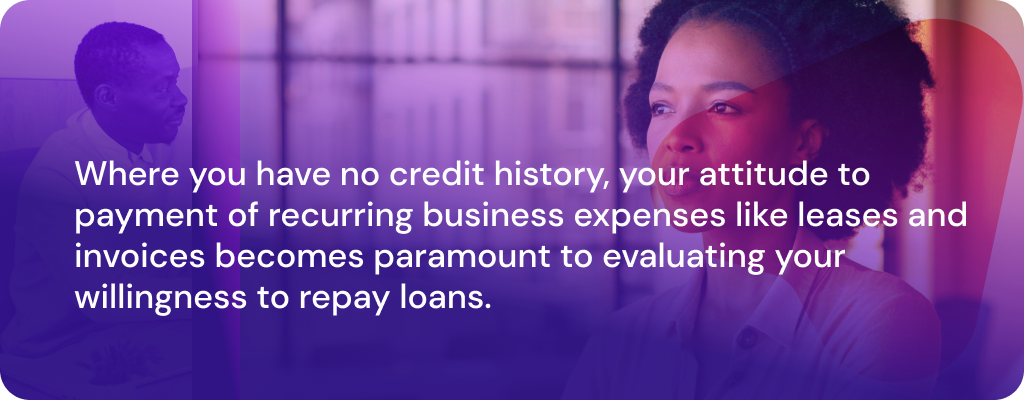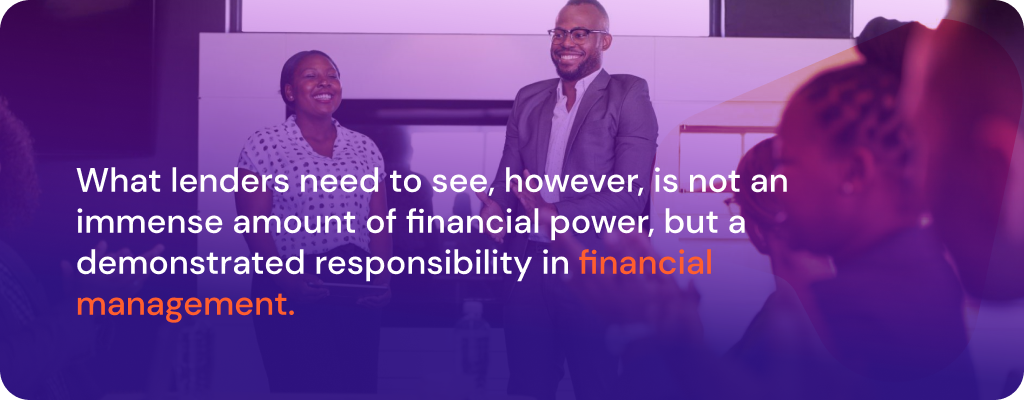Founder’s Guide: Setting Up Your Business For Creditworthiness
7 mins read
Dive into how you can leverage your business’ track-record to secure debt funding and grow and scale on your terms.

What’s the first thing that comes to your mind when a friend or acquaintance asks for a loan? It’s likely a mix of emotions. On one hand, you want to help them out but, on the other, there might be some concern about whether or not they will be able to repay the borrowed sum. This inner dilemma reflects the essence of creditworthiness – the trustworthiness and financial ability of a person or business entity to repay borrowed funds.

If you’re a business owner looking to grow and scale on your own terms, it’s likely that you will find yourself on the other side of this equation multiple times. The fact is that your business needs capital to grow and achieve its full potential; capital that may often present itself in the form of credit. To secure this credit, you will have to prove to lenders that your business is good for it. In this guide, we’ll explore actionable tips for setting your business up for creditworthiness, which will not only enable your business to secure debt funding but serve as a solid foundation for long-term financial success.
What do lenders consider when assessing creditworthiness?
There’s a common misconception that lenders only consider a business’s finances when determining if it is creditworthy. However, while financial evaluation is a key part of a creditworthiness evaluation, there are other factors that lenders consider when assessing a business. Let’s briefly explore a some of them:
1. Your ability to repay: When you seek a loan, lenders will typically request information on how you intend to repay that loan. With this information, they can determine whether your business has the capacity to repay the loan. Primary among this information is your source of repayment. Your source must demonstrate the capacity to service your debt while maintaining your business’s day-to-day operations. Possible sources of repayment you can present include cash flows, business assets, revenue and growth projections among others.
2. Willingness to repay: Beyond the algorithms that help tech-enabled lenders evaluate a business’ financial capacity to repay a loan, there are some softer factors considered when making a decision. One of these is a demonstrated willingness to repay loans on the part of the business owners. Lenders typically evaluate this by studying your character as a business owner relating to how you run your business. They consider things like whether you have defaulted on loan repayments in the past and your responsiveness to enquiries and demands from your lenders when you have pending actions to take. Where you have no credit history, your attitude to payment of recurring business expenses like leases and invoices becomes paramount to evaluating your willingness to repay loans. Credit companies may also consider how you have responded to challenges encountered in the past and your relationship management skills with your stakeholders i.e. investors, vendors and suppliers.

3. Industry Realities: Although businesses face similar challenges on their journey of growth, industry-specific nuances can often make significant changes in how a lender assesses a business. For example, some industries are more prone to being affected by government policies and regulation, while others are prone to being influenced by the socio-economic realities of the environments in which they operate. When assessing your business for creditworthiness, lenders take into consideration the trends in your industry, how they might potentially affect the revenue projections for your business and consequently your ability to repay the loan.
4. Collateral/Fallbacks: While traditional lenders often accepted collateral in the form of assets, new-age lenders (especially those who are passionate about funding for MSMEs) have begun to take a new approach to collateral. For example, rather than request for a business’ property as collateral, a lender may assess the profiles of its shareholders and stakeholders and take personal guarantees from its directors. A lender may also accept a corporate guarantee from an established entity that owns or is affiliated with the business seeking the loan.
Navigating Creditworthiness for MSMEs
If you run a small or medium scale enterprise, creditworthiness may look a little different for you than it does for established businesses. Where you don’t have a credit history, here are some key steps you can take to demonstrate creditworthiness to potential lenders.
1. Build a Healthy Financial Track Record: Many small business owners miss out on the opportunities that debt funding provides because they believe that they need a large amount of finances to demonstrate that they are creditworthy. What lenders need to see, however, is not an immense amount of financial power, but a demonstrated responsibility in financial management. How much of your capital do you invest in growth opportunities and initiatives? How much of your profit do you re-invest into the business? It’s important for your business to be an established independent entity that has independent accounts through which you process your financial transactions. Consistently pay your bills on time, including invoices, leases and other expenses. Timely payments demonstrate reliability and count positively when your business is being assessed for creditworthiness.

2. Develop a Comprehensive Business Plan: A well-structured business plan demonstrates that you have a clear vision for your company’s future and a strategic approach to achieve it. Include detailed information about your market, target audience, competition, revenue projections, and growth strategies. A solid business plan not only inspires confidence in lenders but also helps you outline how the borrowed funds will be utilised for maximum ROI. While the practice of developing pitch decks is more common amongst businesses seeking equity funding, it is a practice that can come in handy for businesses of all sizes and at all stages of growth. Alongside your business plan, your pitch deck improves your ability to speak to where your business is going and inspire trust from lenders.

3. Consider Starting Small: Embracing the tenets of responsible borrowing and borrowing from responsible lenders practices is a prudent approach to establishing a solid framework of creditworthiness for your small business. Seeking out modest loans or credit lines not only helps in building your credit history but also fosters a sense of financial responsibility. Lenders tend to be more open to extending small loans to businesses with limited credit history, as it represents a more manageable risk for both parties involved. Additionally, consistently meeting repayment obligations not only showcases your commitment to honouring financial agreements but also paves the way for enhanced trust and credibility with lenders. As your business flourishes and your credit history continues to improve, you’ll find yourself gradually gaining access to larger loan amounts and expanded credit lines, further solidifying your position in the financial landscape.

4. Build Trade Credit: Trade credit, also known as vendor credit or supplier credit, refers to an arrangement in which a supplier extends credit terms to a buyer. Instead of requiring immediate payment for goods or services, the supplier allows you to pay at a later date, typically within a specified period. Trade credit can offer your business an excellent opportunity to build creditworthiness by demonstrating a track record of responsible credit management and timely payments. With trade credit, you can gradually establish a positive credit history that opens doors to larger financing options and supports your business’s financial growth.
5. Be Transparent and Communicative: Be transparent with potential lenders about your business’s financial situation . Do not be tempted to manipulate inflows and outflows to tell a false financial story. Open communication can build trust and show your commitment to responsible borrowing. By embracing transparency and open communication, you showcase your commitment to ethical business practices, responsible financial management, and a genuine desire to foster trust with lenders and stakeholders. Building a reputation for transparency and reliability contributes to your overall creditworthiness and positions your MSME for successful growth and financing opportunities.

The journey toward establishing creditworthiness is not merely a financial undertaking, but a strategic effort that combines responsible financial management, open communication, and a commitment to building solid relationships. By understanding the factors that lenders consider, from credit history to industry expertise, and by implementing the steps discussed here, you can set your business—whether large or small— on a trajectory toward enhanced creditworthiness. Ultimately, as the foundation of growth, stability, and financial success, a strong creditworthiness profile empowers businesses to seize opportunities and navigate challenges with confidence.



